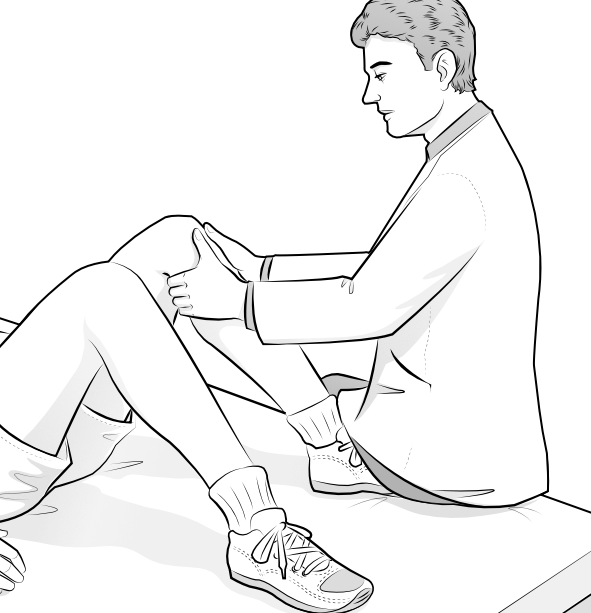The posterior drawer test assesses the integrity of the posterior cruciate ligament.
 Page updated January 2024 by Dr Sheila Strover (Clinical Editor)
Page updated January 2024 by Dr Sheila Strover (Clinical Editor)

Accuracy of the posterior drawer test
The posterior drawer test is not a very accurate assessment, and it is better to augment the examination with stress X-rays.
-
Quote from peer-reviewed paper:
"....While patients with [posterior tibial translation (PTT)] values ≥ 10 mm should undergo surgery, those with PTT values < 10 mm may be treated conservatively...."
Citation: Wollschläger LM, Radke KL, Schock J, Kotowski N, Latz D, Kanschik D, Filler TJ, Caspers S, Antoch G, Windolf J, Abrar DB, Nebelung S. The MRI posterior drawer test to assess posterior cruciate ligament functionality and knee joint laxity. Sci Rep. 2021 Oct 4;11(1):19687. doi: 10.1038/s41598-021-99216-w. PMID: 34608233; PMCID: PMC8490383.
-
Quote from peer-reviewed paper:
"....Stress radiography was more sensitive for detecting posterior tibial translation than KT-1000 and KT-2000....posterior stress radiography with TELOS and kneeling stress radiography are the most reliable methods to evaluate posterior cruciate ligament laxity."
Citation: Guth JJ, Brophy RH, Matava MJ, Steinmetz RG, Smith MV. Stress Radiography Is a Reliable Method to Quantify Posterior Cruciate Ligament Insufficiency: A Systematic Review. Arthrosc Sports Med Rehabil. 2022 Aug 3;4(5):e1851-e1860. doi: 10.1016/j.asmr.2022.05.013. PMID: 36312726; PMCID: PMC9596873.
Forum discussions
- PCL Reconstruction Advice
PCL patients discussing options for and against reconstruction.
Relevant links -
 Course - 2009 - Posterolateral corner injuries of the knee - by Dr Frank R Noyes (Knee Surgeon)
Course - 2009 - Posterolateral corner injuries of the knee - by Dr Frank R Noyes (Knee Surgeon)